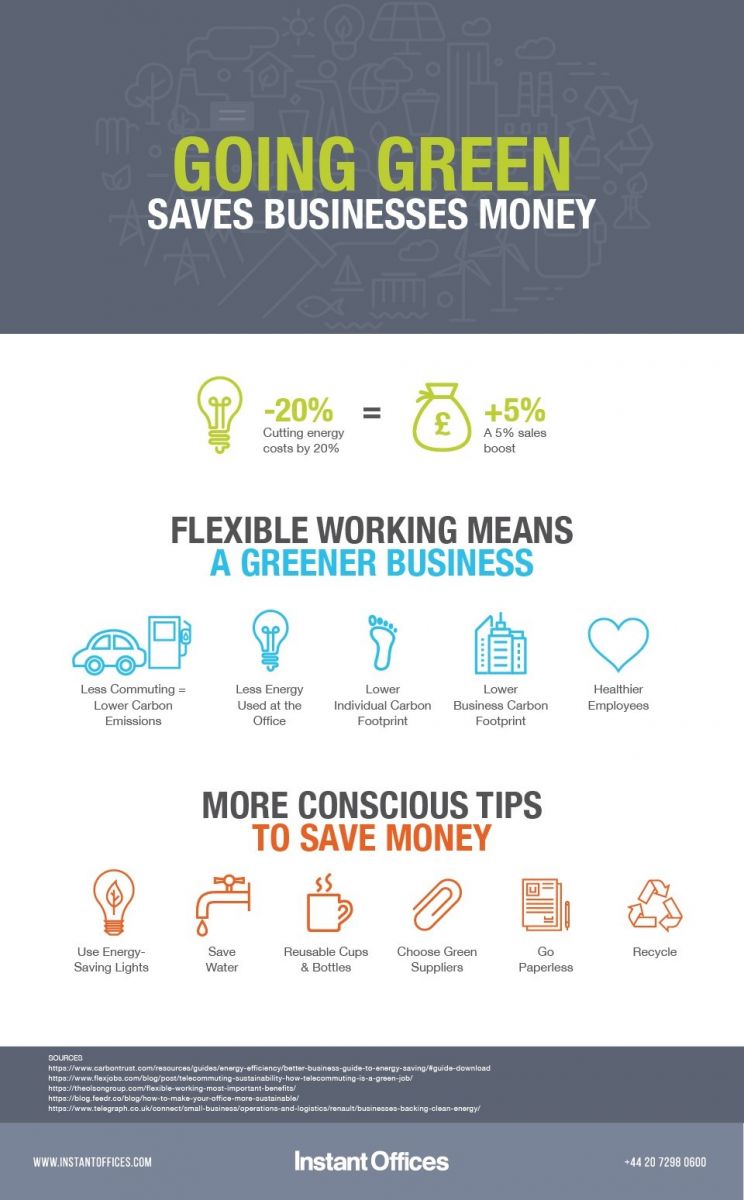Business Energy Targets Should Consider Home Workers
An overall fall in workplace energy consumption as a result of UK lockdowns in 2020 was largely cancelled out by an increase in personal usage, as the government’s...
Read Full Article
Net Zero by 2050 means businesses will have to change the way they operate - choosing to work with green-minded suppliers and cutting energy use are prime examples. We've got some more!
Low-cost and no-cost actions can reduce energy costs by roughly 10%.
Cutting energy costs by 20% has the same effect on the bottom line as a 5% increase in sales.
The green trend is flourishing and more companies are embracing the concept of corporate social responsibility. Unilever, one of the world’s largest consumer goods businesses, has implemented a Sustainable Living Plan, focused on reducing their environmental footprint and making a more positive social impact.
Business Insider reports that small-to-medium-sized enterprises (SMEs) in the UK are also rethinking their energy strategies. For example, heating in office buildings now accounts for 32% of total carbon emissions in the UK and costs have increased dramatically. Businesses spent £22.5 billion on heating in 2015, which was a 49% increase from 1996.
The green benefits of working flexibly
By allowing more employees to work from home or telecommute more often, businesses can rapidly become more energy efficient. Compelling statistics from FlexJobs shows that in the United States, employers are encouraged to consider implementing flex work seriously.
Commuting is part of the second largest source of US greenhouse gas emissions; daily transport to and from work is a significant contributor to environmental pollution. Passenger cars are one of the biggest culprits.
People working from home in the US prevent the emission of 3.6 million tons of commuting-related greenhouse gasses every year. That’s equivalent to planting 91 million trees!
Offices are part of the fourth largest contributor to greenhouse gas emissions.
A 10% reduction in one person’s office hours leads to a 15% decrease in their individual carbon footprint.
Remote work also keeps employees healthier, reducing their exposure to environmental pollution, poor air quality and germs. Healthier employees are naturally more productive and less likely to need sick days.
Tips for a more energy-conscious office
Businesses across the globe need to consider all aspects of their operations when looking for ways to go green. Some common areas of focus include:
Switching to energy-saving light bulbs throughout the building and using timers for overnight and external lighting.
Encouraging employees to use water sparingly and wisely can also reduce the cost of utilities.
The average employee generates 4.40lb of waste every day, according to Road Runner. Businesses can cut down on trash by replacing single-use paper cups and plastic bottles with attractive reusable cups and bottles, branded with the company logo.
Before ordering office supplies, research the available brands and choose those that have green policies, use minimal packaging and embrace sustainable materials.
Going paperless also helps to make a dent in the daily 2lb of discarded paper waste. Replace printouts with e-mails and digital presentations and encourage employees to take notes digitally.
An estimated 70% of a business’ landfill waste can be recycled. Make sure your building or office park has a recycling programme in place.
Allowing more employees to work remotely cuts down on carbon emissions generated by their drive to and from the office and also reduces their in-office energy costs.
This article was provided by Instant Offices

Article written by Instant Offices | Published 04 July 2019
An overall fall in workplace energy consumption as a result of UK lockdowns in 2020 was largely cancelled out by an increase in personal usage, as the government’s...
Read Full ArticleThe most recent Morgan Stanley AlphaWise report, one of a succession researching the trends throughout lockdown for offices, shows that UK estimates for returning to...
Read Full ArticleAJ Products UK and ukactive have teamed up on a report to examine the impact of working practices on employee health and wellbeing. “Tackling Sedentary...
Read Full ArticleWorking from home means you might miss out on walking or cycling as part of your commute and gives you even more excuses not to get up from your desk. Exercise...
Read Full ArticleThe Home Office has appointed Sodexo to assist it in developing its own in-house FM function for its 677 built assets, including office spaces, ports, airports, and data...
Read Full ArticleA new document from the Home Office which outlines new evacuation strategies from high-rise residential buildings has been described as “too little….too...
Read Full ArticleHealth Secretary Steve Barclay has told the BBC’s Today programme that "no one has been harmed" after the presence of Legionella bacteria was...
Read Full ArticleAn independent study of over a thousand workers shows that the rate of chronic sufferers of back pain is highest among those working from home full-time. Conducted by...
Read Full ArticleMillions of employees across the country are set to benefit from new legislation that means flexible working can be requested from the first day of employment. The...
Read Full ArticleNew research reveals the impact the energy crisis is having on the UK workforce, as 70 per cent of hybrid workers admit they’re concerned about the cost of...
Read Full Article